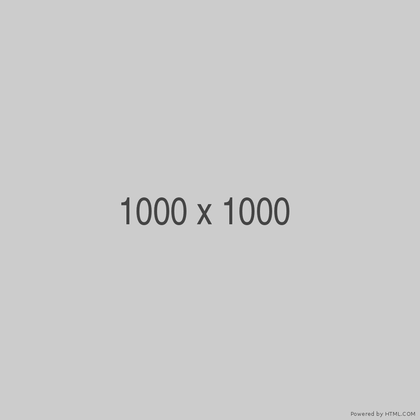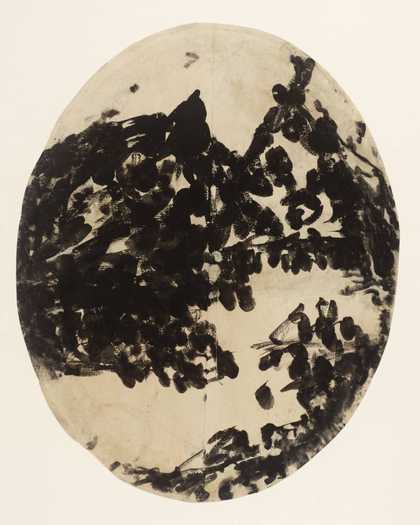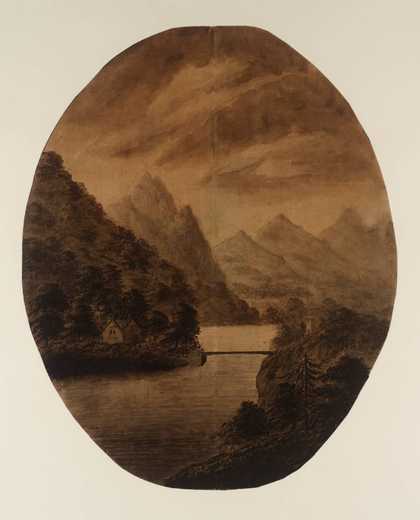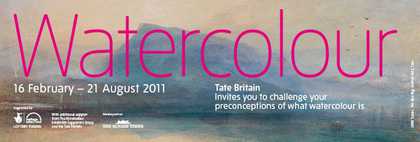
Radical methods: Alexander Cozens. Plate 2, 'Blot' Landscapes for A New Method of Assisting the Invention in Drawing Original Compositions of Landscape 1785
Unusually for his time, in this manual he encouraged his pupils to compose their own imaginary drawings in ink and watercolour. Then, landscape drawing with watercolour was exclusively topographical - a form of ordnance reportage, concerned with scrupulous copying from nature. Detailed panoramas, or ŌĆśprospectsŌĆÖ, were represented without imagination, as vast expanses of land, uninterrupted by compositional devices that might serve to frame the vista as a subject of high art. Rather, ŌĆśpoeticŌĆÖ landscapes rendered from the imagination or inspired by history were the preserve of oil┬Āpainters.
Cozens however broke with convention to devise the radical ŌĆśblotŌĆÖ technique with which his pupils could liberate their imaginations and dream up their own Arcadian┬Āviews.

Alexander Cozens and a pupil
A Blot, Based on New Method, Plate 10. Verso: A Clumsier Blot ()
Tate

Alexander Cozens and a pupil
The PupilŌĆÖs Interpretation of a Blot, Based on New Method, Plate 10 ()
Tate
The blot drawings represented here show the invention of an imaginary landscape in two stages. In the first, the artist has fixed a subject in his mind, conceiving an assemblage of crudely inscribed shapes, rapidly dabbed on the paper with a brush and fingertips. From these marks, compositional ideas were invoked, from which a more tangible sketch could be developed. In the second drawing we see that from the initial blot design a landscape has been realised in varying monochromatic┬Ātones.
In this view, Cozens sought to stir the spectatorŌĆÖs emotions by contrasting the tranquillity of the lake with the imposing mountains and dark thunderous clouds. While in topographical views atmospheric effects were typically omitted, Cozens considered these ŌĆ£circumstancesŌĆØ to be the chief ŌĆ£organ of sentimentŌĆØ for conveying notions of the Sublime. CozensŌĆÖ concern to render assemblages instantaneously, through subconscious thought, in some ways parallels the free association and automatism evident in the works of Surrealist writers and painters, and later Abstract Expressionist artists.
Julia Beaumont-Jones is Collection Registrar, Prints and Drawings at Tate┬ĀBritain.

